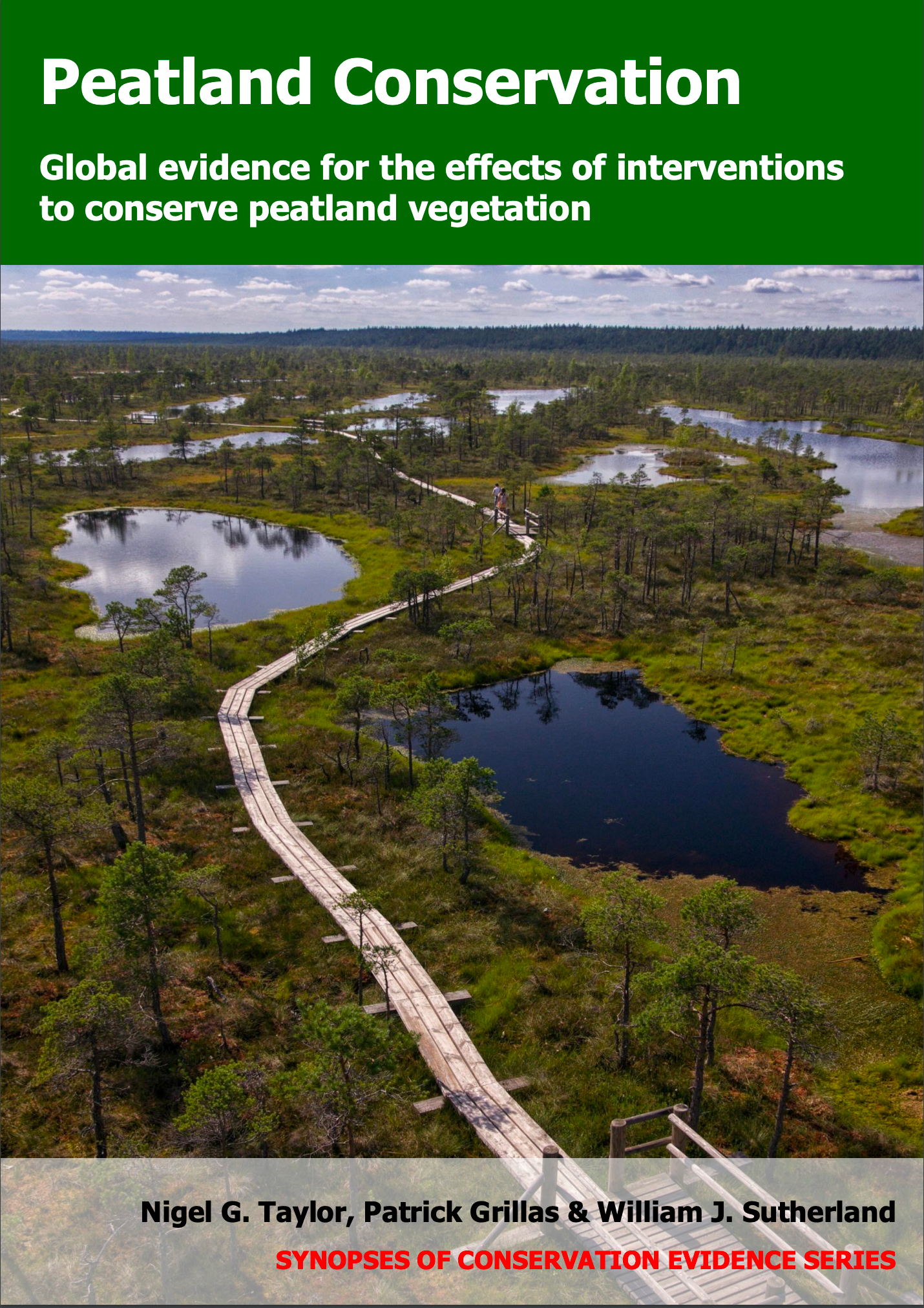Directly plant peatland herbs
-
Overall effectiveness category Likely to be beneficial
-
Number of studies: 5
View assessment score
Hide assessment score
How is the evidence assessed?
-
Effectiveness
50% -
Certainty
40% -
Harms
0%
Study locations
Supporting evidence from individual studies
A replicated study in 1994–1995 in a degraded fen meadow in the Netherlands (van Duren et al. 1998) reported that most planted herbs survived over one growing season, but after two growing seasons survival was lower and more variable. These results were not tested for statistical significance. After one growing season, 92–100% of planted carnation sedge Carex panicea, tawny sedge Carex hostiana and meadow thistle Cirsium dissectum had survived. After two growing seasons, survival was 8–88% across all species, but higher for carnation sedge (72–88%) than tawny sedge (8–20%) or meadow thistle (8–32%). For tawny sedge and meadow thistle, survival was lower in limed plots (8–20%) than unlimed plots (15–32%), and in topsoil-stripped plots (8–20%) than unstripped plots (8–32%). In May 1994, twenty 1 m2 plots were each planted with 15 plants (five of each species). Five plots had been stripped and limed, five stripped but not limed, five limed but not stripped, and five neither stripped nor limed. All plots had been rewetted and were mown every August. In August 1994 and 1995, survival of all plants was recorded.
Study and other actions testedA replicated before-and-after study in 1991–1995 in a historically mined raised bog in Germany (Sliva & Pfadenhauer 1999) reported that planted herbs grew. Three species were planted. After four years, sedge Carex rostrata plants had 40 shoots (vs 1 shoot when planted), common cottongrass Eriophorum angustifolium plants had 2 shoots (vs 1 shoot when planted) and tussocks of sheathed cottonsedge Eriophorum vaginatum were 70 cm in diameter (vs 40 cm after two years). These results were not tested for statistical significance. For the first two species, additional fertilized plants developed more shoots than unfertilized plants (sedges: 142 shoots/plant; common cottongrass: 6 shoots/plant) but fertilizer had no significant effect on sheathed cottonsedge tussock diameter. In 1991, twelve 3 x 35 m plots of bare rewetted peat were planted with the shoots and tussocks (one plant/3 m2). In 1994, six plots were fertilized (nitrogen-phosphorous-potassium; 100 g/m2). Plants were measured in 1991, 1993 and 1995.
Study and other actions testedA replicated study in 1992–1994 in a historically mined fen in Colorado, USA (Cooper & MacDonald 2000) reported that 7–65% of planted herbs survived over two years. Seven species were planted. Survival was 50% for water sedge Carex aquatilis seedlings. New clones had also appeared. Survival was 42–65% for rhizomes of three Carex sedge species, 26% for elk sedge Kobresia simpliciuscula rhizomes, 13% for common cottongrass Eriophorum angustifolium rhizomes and 7% for arctic rush Juncus articus rhizomes. Survival of some species was affected by water table depth. In June 1992, each species was planted into 10 or 27 separate 50 x 50 cm plots (10 plants/plot). Plots contained shallow surface peat (a “few” centimetres), had variable water levels and were cleared of existing vegetation. Rhizomes, supporting at least two live shoots, were transplanted immediately after collection. Water sedge seedlings were grown from seed in spring 1992. Survival was recorded in August 1994.
Study and other actions testedA replicated, controlled, before-and-after study in 1999–2003 in a historically mined bog in eastern Canada (Mazerolle et al. 2006) found that planting in and around created pools did not significantly affect vegetation cover. After four years, planted and unplanted pools had similar cover of Sphagnum moss (13 vs 9%), other mosses (3 vs 3%), herbs (3 vs 5%), shrubs (6 vs 5%). In 1999, eight 6 x 8.5 m pools were created by excavating and rewetting a bog (blocking ditches and building embankments). In 2000, four pools were planted with four herb species. Sphagnum moss was also introduced to the water column. The study does not distinguish between the effects of planting herbs and mosses. The other four pools were not planted, although bog vegetation fragments were spread onto the rest of the peatland. In 2003, vegetation cover was recorded in 36 quadrats/pool, each 30 x 30 cm, along six bank-to-bank transects.
Study and other actions testedA replicated before-and-after study in 2007–2010 in three degraded fens in Colorado, USA (Chimner 2011) reported that 35–55% of transplanted water sedge Carex aquatilis survived over three years, and that surviving plants had grown. On average, sedge plants had more stems after three years (11 stems/plant) than when planted (2 stems/plant). This result was not tested for statistical significance. Mulching planted sedges significantly increased their survival (mulched: 55%; unmulched: 35%) and growth (mulched: 3–9 stems/plant; unmulched: 1–9 stems/plant). In July 2007, sedges were transplanted into 36 bare peat plots (12 plots/fen). Transplants were rhizomes with stems, dug from natural vegetation. Nine sedges were planted in each plot, approximately 35 cm apart. Eighteen plots (6 plots/fen) were also mulched with straw (immediately) and shredded aspen (after one year). In summer 2010, sedge survival and number of stems were counted.
Study and other actions tested
Where has this evidence come from?
List of journals searched by synopsis
All the journals searched for all synopses
This Action forms part of the Action Synopsis:
Peatland Conservation
Peatland Conservation - Published 2018
Peatland Conservation





)_2023.JPG)














